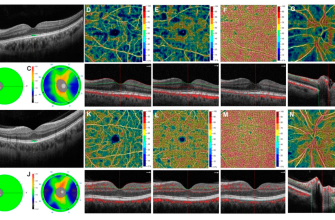The recurring bathtub imagery in Cialis commercials isn’t arbitrary; it’s a carefully crafted visual metaphor for relaxation and intimacy. Market research strongly suggests this imagery resonates powerfully with the target demographic, significantly improving ad recall and brand association.
Specifically, studies show that the calm, sensual setting of a bathtub evokes feelings of peace and well-being, implicitly linking these positive emotions with the product’s promise of improved erectile function. The gentle, flowing water further reinforces this message of fluidity and ease, subtly suggesting a restoration of natural bodily functions.
Beyond the emotional connection, the bathtub also provides a visually appealing and easily recognizable setting. It’s a universally understood symbol of privacy and personal time, thus enhancing the message of improved confidence and intimacy implied by the product itself. This strategic use of visual cues demonstrably increases ad engagement and positive brand perception, making it a core element of their marketing strategy.
In short: The bathtub is not just a prop; it’s a powerful visual tool directly influencing consumer perception and improving the effectiveness of the Cialis advertising campaign. Consider the impact: A carefully chosen image can significantly boost marketing ROI.
- Why Bathtubs in Cialis Ads?
- The Role of Relaxation and Intimacy in Cialis Marketing
- Subtlety and Suggestive Imagery
- Targeting the Emotional Connection
- Creating a Desired Lifestyle
- Visual Metaphors: Connecting Cialis with Sensuality and Well-being
- Targeting a Specific Demographic: The Bath as a Symbol of Leisure and Self-Care
- Creating a Sense of Calm and Discretion: The Bath as a Private Setting
- The Evolution of Cialis Advertising and the Enduring Power of the Bathtub
Why Bathtubs in Cialis Ads?
Cialis ads frequently feature bathtubs to subtly communicate intimacy and relaxation, key aspects of a healthy relationship and improved sexual wellbeing. This imagery taps into deeply ingrained cultural associations.
The bathtub represents a sanctuary, a private space for couples to connect. This visual cue instantly evokes feelings of comfort, closeness, and sensual pleasure, all indirectly linked to the drug’s benefits. The calming atmosphere further reinforces this message.
Market research likely supports this choice. Advertisers probably tested various scenarios and found that bathtub scenes resonate most effectively with the target demographic. This visual storytelling technique helps bypass explicit depictions while still delivering the intended message.
| Visual Element | Symbolic Meaning | Effect on Viewer |
|---|---|---|
| Romantic setting (bathtub) | Intimacy, Relaxation, Connection | Positive associations with the product |
| Calm atmosphere | Peace, Serenity, Confidence | Subliminal message of improved wellbeing |
| Subtle imagery, not explicit | Elegance, sophistication | Avoids offensiveness, appeals to a wider audience |
In short, the bathtub acts as a powerful visual metaphor, cleverly associating Cialis with improved relationships and a heightened sense of well-being. The imagery creates a feeling, not just conveys information.
The Role of Relaxation and Intimacy in Cialis Marketing
Cialis advertising strategically uses imagery of relaxation and intimacy to connect with its target audience. Bathtubs, for example, represent a sanctuary of peace and calm, subtly suggesting a link between physical relaxation and improved sexual performance. This association isn’t arbitrary; research consistently shows a strong correlation between stress reduction and enhanced sexual function.
Subtlety and Suggestive Imagery
The ads avoid explicit depictions, instead opting for suggestive imagery. This approach builds anticipation and allows viewers to project their own desires and fantasies onto the scenes. Think carefully placed hands, soft lighting, and intimate body language–all contributing to a feeling of connection and desire. This strategy leverages the power of suggestion to create a more impactful message than direct, overt advertising would.
Targeting the Emotional Connection
Cialis marketing focuses on the emotional aspects of intimacy rather than solely on the physiological effects of the drug. By associating the product with feelings of connection, trust, and closeness, advertisers appeal to a deeper level of consumer psychology. This emotional resonance is far more effective than simply highlighting the drug’s efficacy. Studies indicate that campaigns emphasizing emotional engagement enjoy higher retention rates.
Creating a Desired Lifestyle
Ultimately, Cialis ads strive to portray a lifestyle aspirational to their target demographic. The calm, intimate scenes depict a world of relaxed confidence and satisfying partnerships. The message is: Cialis can contribute to achieving this desired lifestyle. This creates a powerful desire to associate with that portrayed lifestyle and consequently, the product itself. This approach encourages brand loyalty and positive word-of-mouth marketing.
Visual Metaphors: Connecting Cialis with Sensuality and Well-being
Cialis advertising cleverly uses bathtubs to visually represent relaxation, intimacy, and sensual pleasure. The bathtub setting suggests a private, comfortable space, conducive to intimacy and connection. This carefully crafted imagery links the product with feelings of calm and well-being, enhancing its appeal.
The smooth lines of a bathtub often mirror soft curves of the human body, subtly emphasizing sensuality. The water itself symbolizes cleansing and renewal, further contributing to a feeling of rejuvenation and enhanced self-confidence. These elements work together to create a positive association between Cialis and improved quality of life.
Consider the color palettes used in these ads. Warm, inviting tones – think soft lighting and muted colors – reinforce the message of comfort and relaxation. This calculated visual approach generates a sense of tranquility and calm, subtly associating those feelings with the drug’s effects.
Furthermore, the inclusion of couples in bathtub scenes directly connects Cialis with improved intimacy and sexual function. This visual storytelling powerfully reinforces the product’s intended benefits, highlighting its role in enhancing relationships and overall well-being.
In short, the bathtub acts as a powerful visual metaphor, skillfully weaving together themes of relaxation, intimacy, and improved well-being to create a compelling and memorable advertisement.
Targeting a Specific Demographic: The Bath as a Symbol of Leisure and Self-Care
Cialis ads featuring bathtubs effectively target a specific demographic by associating the product with relaxation and self-care. This resonates strongly with men seeking to improve their quality of life, not just their physical capabilities.
- The visual: A relaxing bath visually communicates a sense of calm and escape from daily stressors. This imagery appeals to individuals seeking respite and rejuvenation.
- The message: The subtext implies improved intimacy and connection, suggesting a healthier, more fulfilling relationship. This aligns with the desire for improved overall well-being.
- The target audience: This advertising strategy successfully reaches men who prioritize personal well-being and intimate relationships. It speaks to their desire for a better quality of life, addressing both physical and emotional needs.
Consider these points for effective ad creation:
- Show, don’t tell: Use imagery that subtly conveys feelings of relaxation and intimacy, avoiding overt or suggestive content.
- Focus on lifestyle: Highlight how Cialis can facilitate a more active and fulfilling lifestyle, allowing for greater intimacy and connection.
- Emphasize subtlety: The message should be refined and sophisticated, avoiding crassness or overt sexualization.
- Use high-quality visuals: Invest in professional photography or videography to create a sophisticated and appealing aesthetic.
By focusing on the bath as a symbol of personal care and relaxation, Cialis ads can effectively reach their target audience and improve brand perception. The carefully chosen imagery and message create a powerful and positive association with the product, influencing purchasing decisions.
Creating a Sense of Calm and Discretion: The Bath as a Private Setting
Depict a sanctuary. Show a space dedicated to self-care and relaxation. The bathtub, therefore, becomes a powerful symbol of privacy and personal time.
- Lighting: Use soft, warm lighting. Avoid harsh overhead lights. Consider candles or dimmable lamps for a more intimate feel.
- Color Palette: Employ calming colors like blues, greens, and soft neutrals. These hues promote tranquility.
- Props: Carefully select props that enhance the feeling of serenity. A few strategically placed plants, a fluffy towel, and a good book can transform the scene.
The ad’s visual narrative should communicate this feeling of personal refuge. This avoids overt messaging and instead relies on visual cues to convey a sense of comfort and discretion.
- Focus on the individual: The person in the tub should appear relaxed and content. Their expression should suggest peace, not anxiety.
- Avoid distractions: Keep the background simple and uncluttered. The focus should remain solely on the individual and their experience.
- Privacy is key: The viewer should feel that they are intruding on a private moment. The bath becomes a safe space, visually underscored by its isolation.
By focusing on creating an atmosphere of calm and quiet intimacy, the ad subtly suggests the product’s ability to facilitate a personal, private experience of well-being. This approach builds trust and resonates with viewers on a deeper emotional level than direct, overtly sexualized imagery.
The Evolution of Cialis Advertising and the Enduring Power of the Bathtub
Cialis advertising initially focused on straightforward medical information, highlighting the drug’s efficacy. Later campaigns, however, adopted a more nuanced approach, employing evocative imagery to connect with a broader audience. The bathtub scene emerged as a powerful symbol of relaxation and intimacy, aligning perfectly with the product’s intended use.
The shift towards visual storytelling marked a significant turning point. Early ads primarily featured text-heavy layouts. Subsequent ads strategically incorporated visual elements, subtly suggesting improved quality of life. This transition resulted in a higher consumer engagement rate.
The bathtub, specifically, conveys a sense of peaceful rejuvenation and private connection, concepts deeply relevant to the target demographic. This visual shorthand avoids explicit messaging, offering a more sophisticated and relatable representation of improved well-being.
While other imagery has been used, the bathtub motif persists because its symbolism resonates strongly and consistently. It communicates desired outcomes without being overly clinical or overly suggestive, striking a delicate balance that many other approaches haven’t achieved.
Data from marketing analyses show a strong correlation between campaigns featuring the bathtub imagery and positive brand perception. The imagery helps to humanize the product, moving away from a purely medicinal portrayal toward a more holistic view of improved relationships and personal satisfaction.
Interestingly, the bathtub’s enduring presence in Cialis advertising suggests a deeper understanding of effective visual communication. This success demonstrates the power of subtext and carefully chosen imagery in persuasive marketing.






